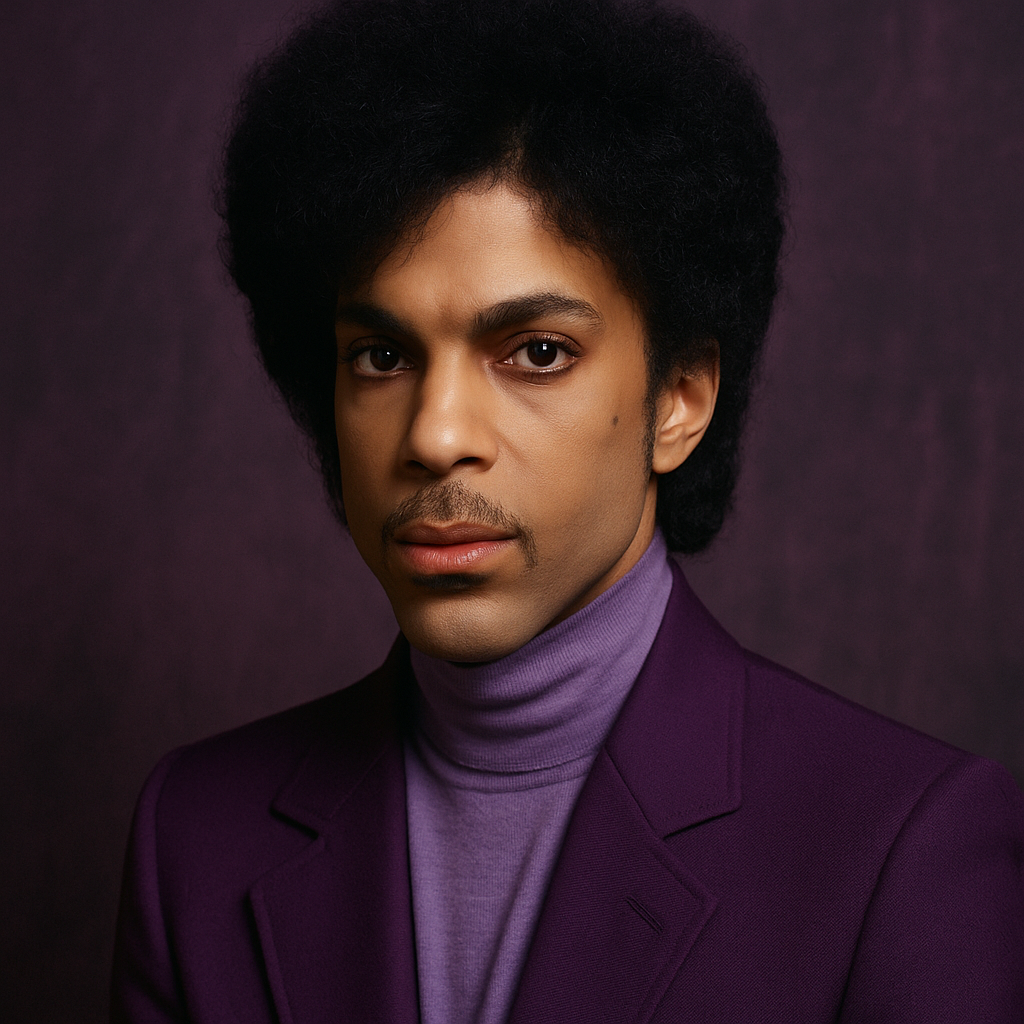Prince Rogers Nelson was more than a singer — he was a revolution in purple. Born in Minneapolis, raised on rhythm, and destined for greatness, Prince became one of the most influential artists in modern music history. From his humble beginnings to his electric rise and his enduring legacy, this is the story of the man the world will forever know simply as Prince.
🌟 Early Life: From Minneapolis to Music
Prince Rogers Nelson was born on June 7, 1958, in Minneapolis, Minnesota, to musician parents John L. Nelson and Mattie Della Shaw, both active in the local jazz scene. His father was a pianist and songwriter; his mother, a jazz singer. Prince inherited their talent — but also experienced a turbulent childhood.
After his parents’ separation, he moved between homes, often finding stability only through music. By age seven, he was playing piano by ear; by his teens, he’d mastered guitar, bass, and drums. Prince channeled his emotions into sound, developing a unique style that fused funk, rock, soul, and pop — years before the world was ready for it.
🎸 The Minneapolis Sound
In the 1970s, Minneapolis wasn’t known for producing R&B stars. Prince changed that.
He created what became known as The Minneapolis Sound — a mix of funky basslines, synthesizers, and attitude that no one had heard before.
At just 19 years old, he signed with Warner Bros. Records, securing full creative control — a rare victory for a new Black artist at the time. His debut album, For You (1978), was a one-man show: he wrote, produced, and played every instrument himself. The world was witnessing a once-in-a-generation genius in the making.
🎤 Prince’s Rise to Fame
His second album, Prince (1979), brought his breakout hit “I Wanna Be Your Lover.”
With it, he announced himself as a star — bold, mysterious, and magnetic. Then came Dirty Mind (1980), Controversy (1981), and 1999 (1982), each one more daring than the last.
Prince blurred the lines between masculinity and femininity, sacred and sensual, funk and rock. He wasn’t following the industry — he was remaking it.
☔ The Purple Rain Era
In 1984, the release of Purple Rain changed everything.
The album and its accompanying film catapulted Prince Rogers Nelson into superstardom. He played “The Kid,” a young musician fighting through pain and competition — a role that mirrored his own life story.
The soundtrack, featuring “When Doves Cry,” “Let’s Go Crazy,” and “Purple Rain,” sold over 25 million copies worldwide, won two Grammys, and earned Prince an Academy Award.
At that moment, the boy from Minneapolis wasn’t just famous — he was a cultural phenomenon.
⚡ The Symbol of Freedom
In the 1990s, Prince once again broke the rules — this time, in business.
Frustrated by record label restrictions, he famously changed his name to an unpronounceable symbol, appearing on stage with “SLAVE” written on his face. His message was clear: artists should own their art.
This bold act made him a symbol of independence long before the modern “own your masters” movement. His defiance inspired countless artists to take control of their music careers.
🕊️ The Private Side of Prince
Though Prince Rogers Nelson lived under bright lights, he was intensely private.
He built Paisley Park, a studio, home, and creative compound in Chanhassen, Minnesota, where he produced music and hosted secret shows.
He was known for random late-night performances, spontaneous creativity, and a deep spiritual side rooted in his Jehovah’s Witness faith. Prince also quietly supported numerous causes — education, equality, and the arts — often donating anonymously.
💔 His Final Days
On April 21, 2016, tragedy struck. Prince was found unresponsive at Paisley Park and later pronounced dead from an accidental overdose of fentanyl at the age of 57.
The world mourned. Cities turned their skylines purple, fans gathered in the rain to sing his songs, and tributes poured in from every corner of the globe. His death marked the end of an era — but his music ensured his spirit would never fade.


